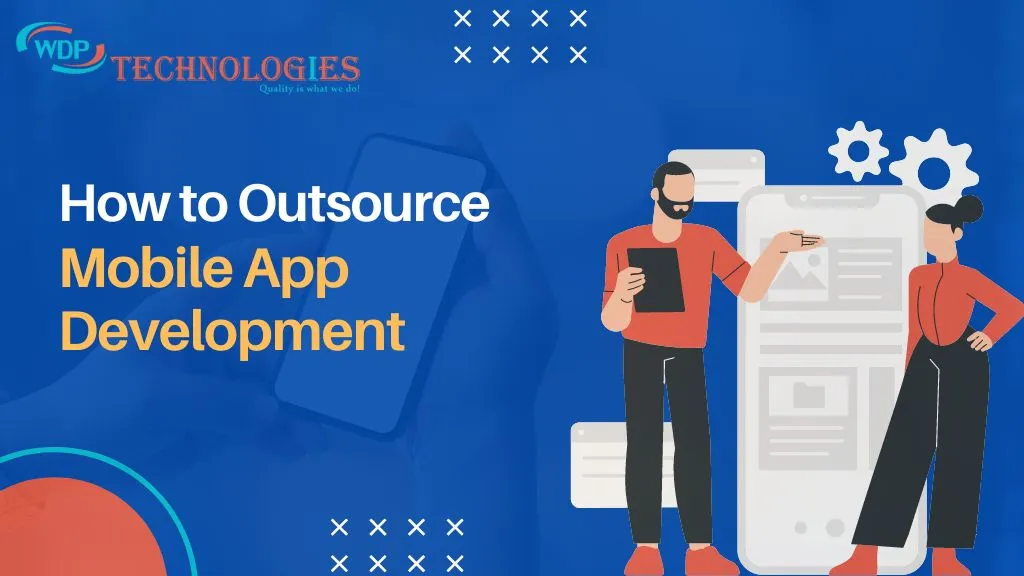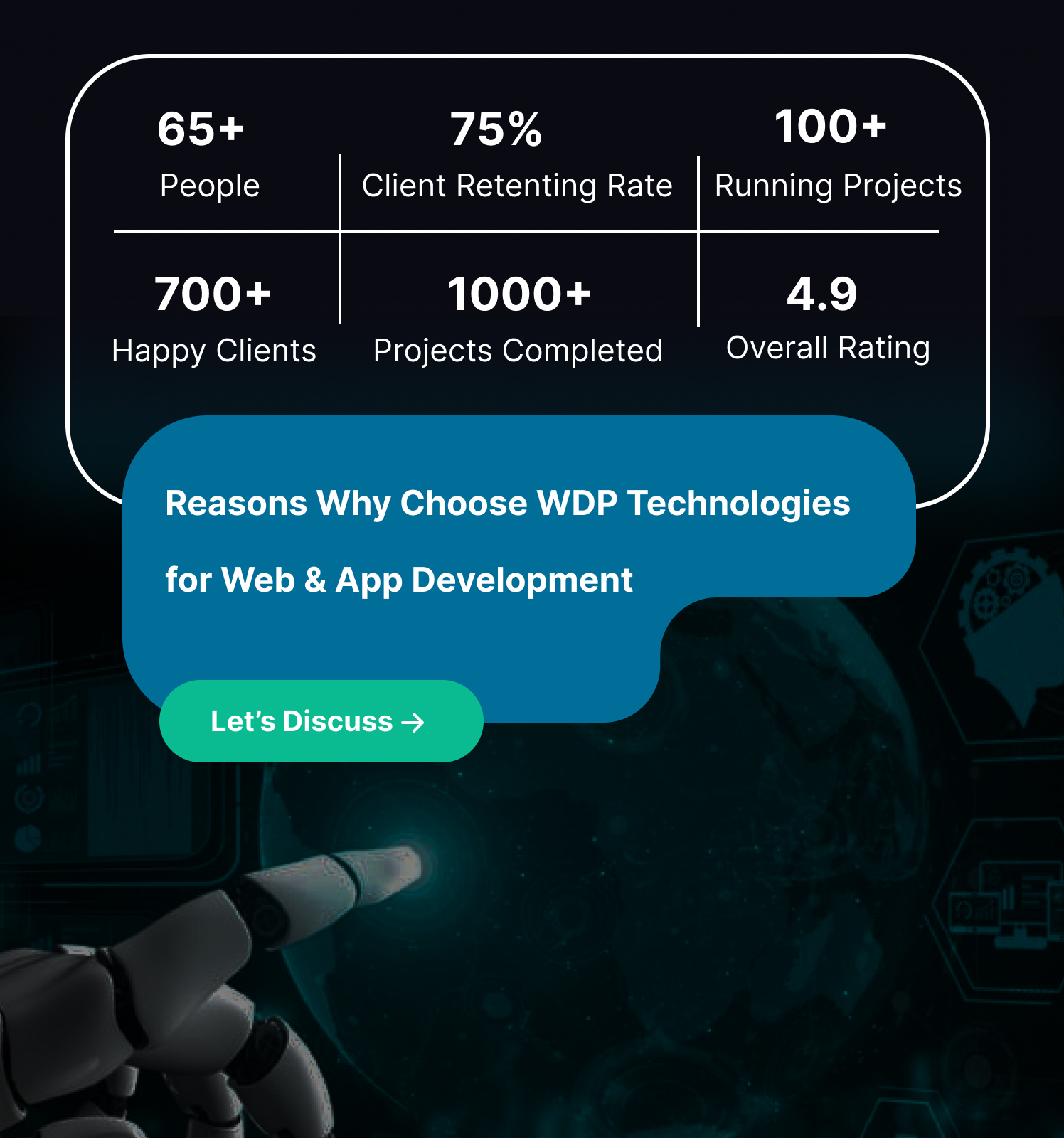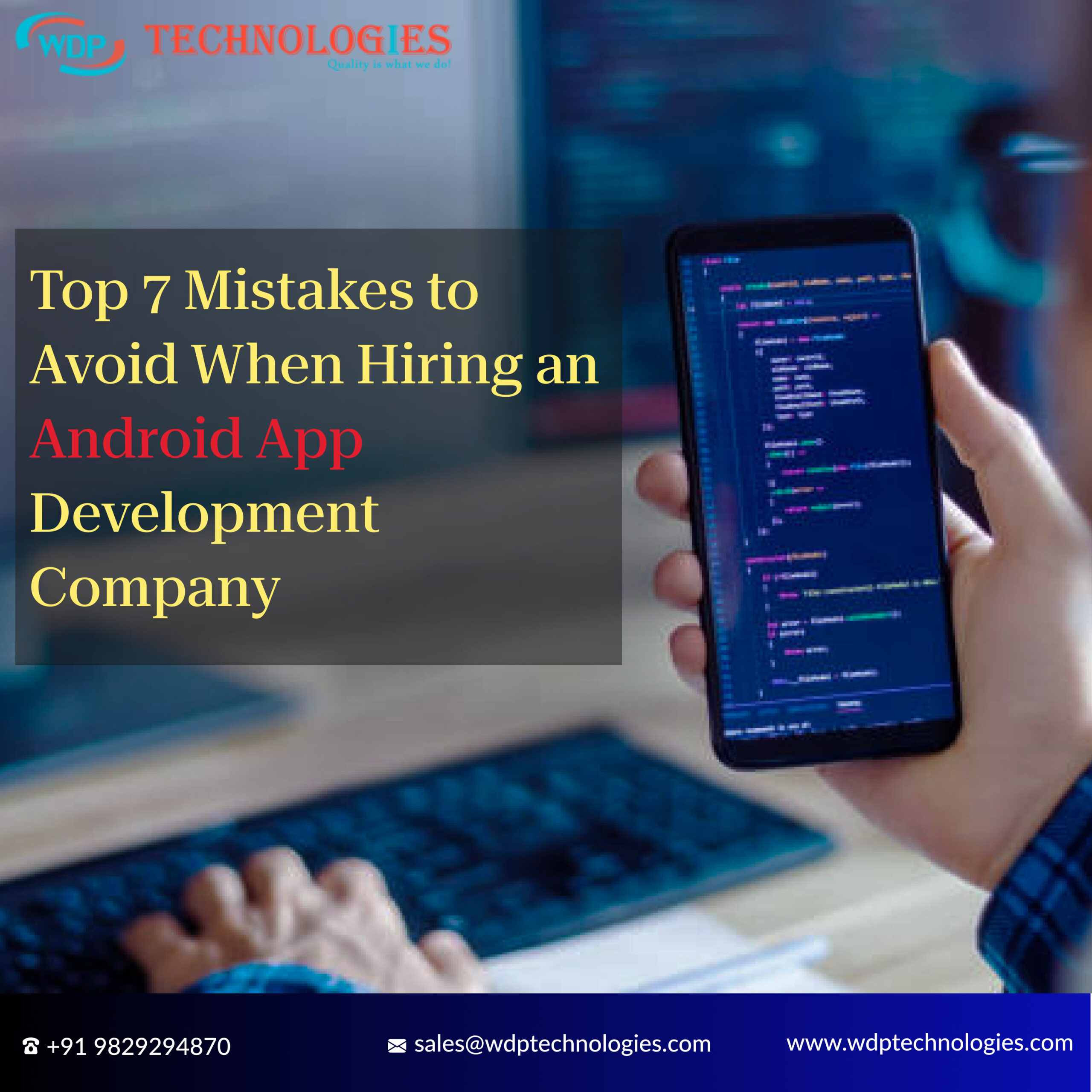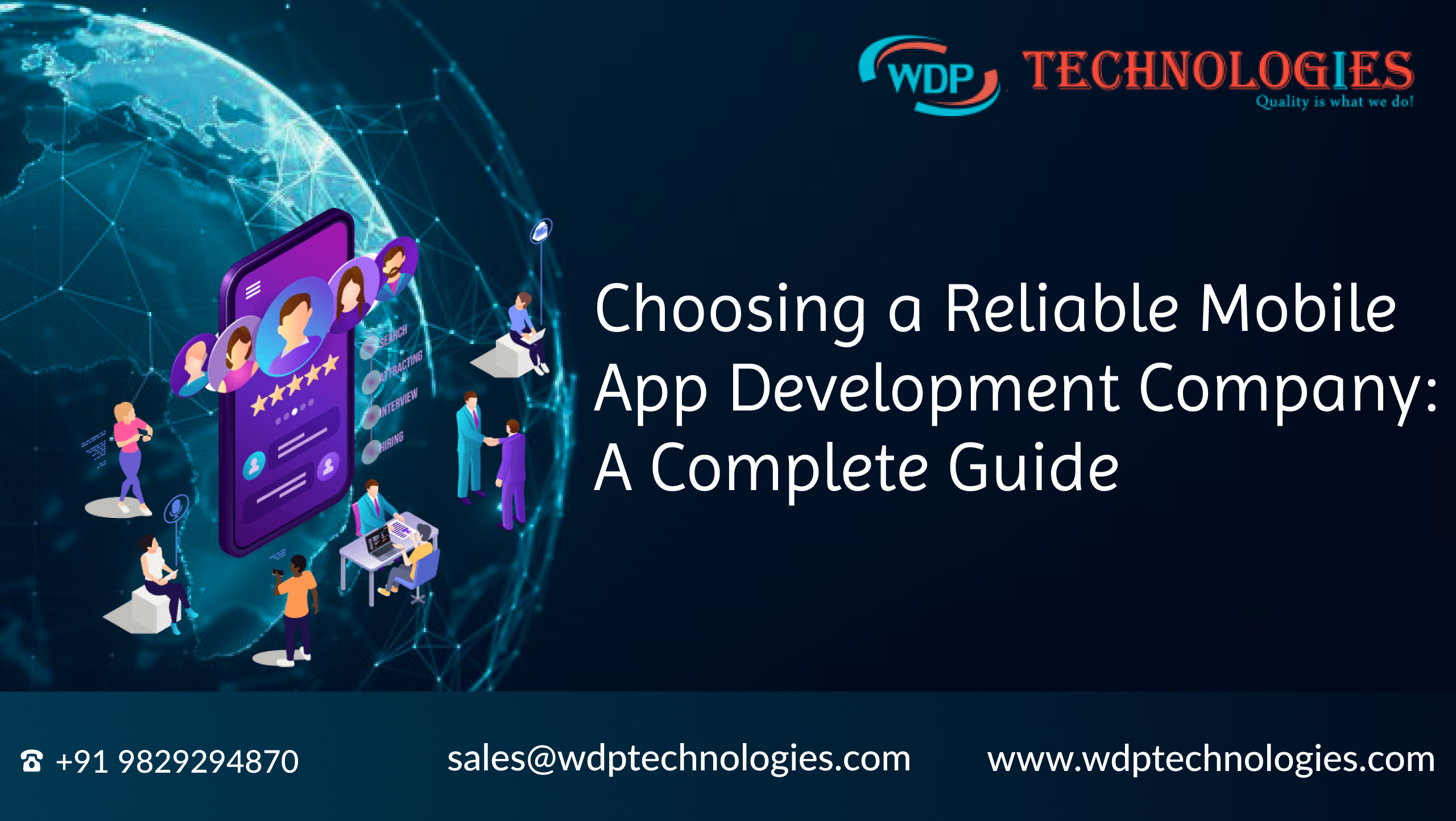In today’s technologically advanced world, mobile applications have become a fundamental part of online businesses’ success. However, developing a mobile app from scratch can be a complex and time-consuming process. This is where outsourcing mobile app development comes into play. Outsourcing enables companies to leverage the expertise of skilled professionals while focusing on their core competencies. In this blog post, we will explore the most effective strategies to outsource mobile app development in 2023.
Exploring Outsource Mobile App Development
Outsource mobile app development refers to the practice of hiring external resources or partnering with a third-party company to handle the design, development, testing, and maintenance of mobile applications. Instead of relying solely on an in-house team, businesses leverage the expertise of external professionals or agencies to bring their app ideas to life.
The outsourcing partner takes on the responsibility of executing the entire app development process or specific stages of it, depending on the agreed-upon scope of work. This approach allows businesses to leverage external talent, reduce costs, access specialized skills, and focus on their core competencies while ensuring the timely delivery of high-quality mobile applications.
How to Outsource Mobile App Development
By following these steps, you can effectively outsource mobile app development while ensuring effective communication, maintaining quality standards, and achieving your desired outcomes. Regular monitoring, feedback, and collaboration are key to building a successful and productive outsourcing partnership.
1. Define your project requirements
Start by clearly defining your app development requirements. This includes determining the purpose and goals of your app, identifying its target audience, specifying the desired features and functionalities, selecting the platforms you want the app to support (iOS, Android, or both), establishing a realistic timeline for development, and setting a budget. The more specific and detailed you can be in defining your requirements, the easier it will be to communicate them to potential outsourcing partners.
2. Research and shortlist potential outsourcing partners
Conduct thorough research to find potential outsourcing companies or freelancers that specialize in mobile app development. Look for companies with a strong track record and positive client reviews. Consider factors such as their experience in the industry, the size and expertise of their development team, their portfolio of past projects, and their proficiency in the technologies and frameworks relevant to your app.
3. Evaluate and select the right partner
Once you have a list of potential outsourcing partners, evaluate them based on several criteria. Consider their capabilities, reputation, communication skills, cultural compatibility, and pricing. Request and review their portfolio to assess the quality of their previous work and whether it aligns with your expectations. Look for testimonials or references from their clients. Arrange interviews or meetings with the shortlisted candidates to discuss your project in detail and gauge their understanding, responsiveness, and willingness to collaborate.
4. NDA and legal agreements
Before sharing sensitive information about your app idea and project details, protect your intellectual property by signing a non-disclosure agreement (NDA) with the selected outsourcing partner. The NDA ensures that the outsourcing company or freelancer will maintain confidentiality and not disclose your proprietary information. Additionally, establish other legal agreements, such as a contract or service agreement, that clearly outline the terms, responsibilities, and ownership of the app.
5. Project scoping and planning
Collaborate with the outsourcing partner to define the project scope, milestones, and deliverables. This involves providing detailed documentation of your requirements and discussing them with the outsourcing team. Establish a clear communication channel, such as email, project management platforms, or chat applications, to facilitate effective communication and collaboration. Determine the project timeline, the development approach (e.g., agile or waterfall), and any specific project management methodologies to be followed.
6. Communication and collaboration
Regular and open communication is essential for successful outsourcing. Establish a clear communication plan with the outsourcing partner, including the frequency and mode of communication, such as weekly meetings or daily updates. Utilize project management tools to streamline collaboration and track progress. These tools can include project management platforms (e.g., Jira, Asana), version control systems (e.g., Git), and communication tools (e.g., Slack, Microsoft Teams). Ensure that the outsourcing team is responsive and provides regular updates on the project status.
7. Agile development methodology
Consider adopting an agile development methodology, such as Scrum or Kanban. Agile methodologies promote iterative development and collaboration, allowing you to receive frequent feedback and make adjustments throughout the development process. This approach enables you to prioritize features, set short-term goals (sprints), and adapt to changing requirements and market conditions.
8. Quality assurance and testing
Define the quality assurance (QA) processes and testing requirements with the outsourcing partner. Establish guidelines for bug reporting, bug fixing, and quality control. Determine the testing methodologies, such as unit testing, integration testing, and user acceptance testing. Conduct regular testing throughout the development lifecycle to identify and address any issues promptly. Encourage the outsourcing partner to perform comprehensive testing to ensure the app functions as intended across different devices and platforms.
9. Review and feedback
Regularly review the progress and output provided by the outsourcing partner. Conduct thorough reviews of each milestone or iteration, providing timely and constructive feedback. This helps ensure that the app aligns with your expectations and requirements. Encourage open communication and maintain transparency throughout the process to address any concerns or issues promptly.
10. Deployment and ongoing support
Once the app development is complete, collaborate with the outsourcing partner to deploy the app to the respective app stores (e.g., Apple App Store, Google Play Store). Discuss post-launch support, maintenance, and updates. Determine the level of ongoing support required and establish procedures for bug fixes, performance enhancements, and feature updates. This may involve defining a service-level agreement (SLA) that outlines the terms and conditions of ongoing support.
Benefits of Outsource Mobile App Development
Outsource mobile app development can provide several benefits for businesses. Here are some of the key advantages:
a. Cost-effectiveness
One of the primary reasons businesses choose to outsource mobile app development is cost savings. Outsourcing allows you to access skilled developers from countries or regions with lower labor costs. This can significantly reduce development expenses compared to hiring an in-house team.
b. Time efficiency
Outsourcing mobile app development enables you to leverage the expertise of experienced developers who specialize in app development. They are familiar with the latest tools, technologies, and development processes, which helps accelerate the app development lifecycle. This can result in faster time to market for your mobile app.
c. Access to specialized skills
By outsourcing, you gain access to a global talent pool of mobile app developers with diverse skill sets. This allows you to choose developers who have specific expertise in the platforms (iOS, Android, etc.), programming languages, frameworks, or technologies you require for your app. It ensures that your app is developed by professionals with the right skills and knowledge.
d. Focus on core competencies
Outsourcing app development allows you to focus on your core business activities while leaving the technical aspects to experts. Instead of investing time and resources in building an in-house app development team, you can concentrate on your business strategy, marketing, and customer engagement.
f. Scalability and flexibility
Outsourcing mobile app development provides flexibility in scaling your development resources according to your project requirements. You can easily ramp up or down the team size based on the workload, saving costs during slower periods and quickly expanding during peak demand.
g. Quality assurance
Reputable outsourcing companies often have a dedicated quality assurance (QA) team that ensures the developed app meets high standards. They perform rigorous testing and debugging to identify and fix any issues before the app is released. This helps deliver a reliable and high-quality mobile app.
h. Ongoing support and maintenance
Outsourcing partners typically offer post-development support and maintenance services. They can handle updates, bug fixes, and upgrades, ensuring the smooth operation of your app over time. This saves you from the hassle of maintaining an in-house team for long-term app management.
While outsourcing mobile app development offers numerous benefits, it’s essential to select a reliable outsourcing partner with a proven track record and positive reviews. Thoroughly evaluate their expertise, communication channels, security measures, and cultural compatibility to ensure a successful and productive outsourcing engagement.
Inhouse vs Outsourcing Mobile App Development
The decision to choose between in-house and outsource mobile app development depends on various factors. Let’s compare the two approaches:
In-house Mobile App Development:
- Control and direct involvement: With an in-house development team, you have direct control over the entire app development process. You can manage the team, set priorities, and make real-time adjustments to the project as needed. This level of control can be beneficial for companies with unique or highly specialized app requirements.
- Domain expertise and knowledge retention: Building an in-house team allows you to develop domain expertise specific to your industry or business needs. The team members can gain deep knowledge about your business processes, customer base, and internal systems. This can facilitate smoother communication and faster decision-making during the development process.
- Better collaboration and communication: Having a team working in the same physical location can foster better collaboration and communication among team members. They can easily exchange ideas, address issues, and provide instant feedback, which can lead to faster development cycles and better coordination with other departments.
- Long-term cost considerations: While in-house development may offer more control, it can also come with higher costs. Hiring and maintaining an in-house development team involves expenses such as salaries, benefits, infrastructure, training, and software licenses. Additionally, if the app development is a one-time project or requires specific expertise, it may not be cost-effective to maintain a full-time team.
Outsource Mobile App Development:
- Cost savings: One of the primary reasons companies choose to outsource is cost savings. Outsourcing allows you to access skilled developers from countries or regions with lower labor costs. This can significantly reduce development expenses compared to maintaining an in-house team. It also eliminates costs associated with infrastructure, software, training, and employee benefits.
- Access to specialized skills and experience: Outsourcing provides access to a global talent pool of mobile app developers with diverse skill sets and expertise. You can choose developers who have specific experience in the platforms, programming languages, or technologies required for your app. This ensures that your app is developed by professionals with the right skill set and knowledge.
- Time efficiency and faster time-to-market: Outsourcing mobile app development allows you to leverage the expertise of experienced developers who specialize in app development. They are familiar with the latest tools, technologies, and development processes. This can result in faster development cycles, quicker time-to-market, and early realization of business benefits.
- Scalability and flexibility: Outsourcing offers flexibility in scaling development resources based on project needs. You can easily ramp up or down the team size, depending on workload fluctuations, without the need for recruitment or layoffs. This scalability ensures optimal resource allocation and cost efficiency.
- Focus on core competencies: Outsourcing app development enables you to focus on your core business activities and competencies. Instead of investing time and resources in building and managing an in-house development team, you can concentrate on strategic planning, marketing, and customer engagement.
It’s important to note that choosing between in-house and outsource mobile app development depends on your specific requirements, budget, timeline, and available resources. Some companies may opt for a hybrid approach, combining in-house and outsourced teams, to leverage the benefits of both models. Ultimately, the decision should be based on a careful evaluation of your needs, cost considerations, and long-term business strategy.
Cost of Outsource Mobile App Development
The cost to outsource mobile app development can vary significantly depending on various factors. As a general estimate, the cost can range anywhere from $5,000 to $100,000. However, it’s important to note that this is a broad range, and the actual cost will depend on the specific requirements of your project.
Factors such as the geographic location of the development team, the platforms targeted (iOS, Android, or both), the complexity of features, the timeline, and the chosen tech stack all contribute to the overall cost.
For simpler apps with basic features and functionality, the cost may fall toward the lower end of the range. On the other hand, more complex apps with advanced features, intricate designs, and integration with third-party systems may fall toward the higher end of the range.
To get a more accurate cost estimate for your specific project, it’s recommended to consult with potential outsourcing partners. By providing them with detailed project requirements and specifications, they can analyze your needs and provide a more precise cost estimate tailored to your project.
Read More : How To Manage Offshore Development Team Effectively
Conclusion
To effectively outsource mobile app development in 2023, it is crucial to follow a systematic approach. Start by defining your project requirements, including the desired features, targeted platforms, timeline, and budget. Conduct thorough research to identify potential outsourcing partners based on their experience, portfolio, and client reviews. Evaluate and select the right partner by considering their capabilities, communication skills, cultural compatibility, and pricing. Sign a non-disclosure agreement (NDA) and establish legal agreements to protect your intellectual property. Collaborate closely with the chosen outsourcing partner, clearly defining the project scope, milestones, and deliverables. Foster open communication and utilize project management tools for effective coordination. Regularly review the progress, provide timely feedback, and ensure quality assurance and testing procedures are in place.
Finally, work together to deploy the app and establish ongoing support and maintenance arrangements. By following these steps, you can navigate the outsourcing process successfully and achieve your mobile app development goals in 2023.












